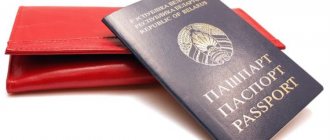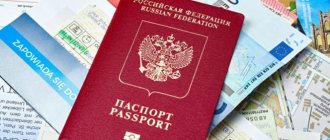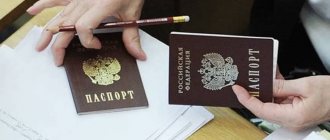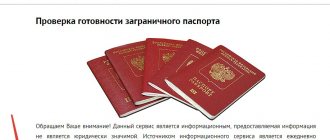Russia will begin issuing biometric passports with fingerprints. The changes will come into force on January 1, 2015, and for diplomatic missions of the Russian Federation abroad - no later than January 1, 2021.
News on the topic Fingerprints will be included in international passports from 2015
Russian President Vladimir Putin signed the bill on fingerprints in biometric passports in December 2013. The document says that Russian citizens will receive foreign passports with fingerprints of index (or other) fingers starting from the age of 12.
The need for fingerprinting is determined, first of all, by checking passports for authenticity, as well as preventing the use of the document by other persons.
However, fingerprinting will not be mandatory.
Features and appearance of the document
Important! Please keep in mind that:
- Each case is unique and individual.
- A thorough study of the issue does not always guarantee a positive outcome. It depends on many factors.
To get the most detailed advice on your issue, you just need to choose any of the options offered:
- Use the online chat in the lower corner of the screen.
- Call: Federal number: +7 (800) 511-86-74
In the Russian Federation, such a novelty as a biometric foreign passport appeared in 2006. But then only a digital photo of the owner was placed on the chip, with the help of which the person was identified. Starting in 2013, in both capitals of Russia, and in other cities since 2015, data on papillary patterns began to be included in new generation passports.
A passport containing biometrics is more reliable, as it has more elements for protecting personal data. The number of pages in it has increased from 36 to 45. The service life has also increased to 10 years. It is valid on a par with a regular passport in all European countries. The old-style passport is not yet expected to be abandoned.
The document is distinguished by a special built-in chip, which contains all the biometric information about its owner, namely the person’s full name, his photo, and other personal data, such as date of birth. The microcircuit is a non-volatile RFID chip with a short range. It is possible to add information about the biological characteristics of a particular person. These are unique fingerprints and iris patterns. All biometric information is read by special remote devices.
The presence of an electronic mechanism in the document makes the procedure for identifying a citizen when crossing the border much simpler. The chip is located on a photo page, which is made of very hard and durable plastic, which prevents damage to the chip.
The outer side of the cover is decorated with the inscription in Russian and English “Passport” and “Russian Federation”, made in golden color. In the middle is the coat of arms of the Russian Federation. The initial page contains a photo, all information about the owner made with a laser, which eliminates the possibility of forgery, and a personal signature.
The first and second pages are made of plastic, and from 3 to 38 are made of high-quality thick paper. On pages 5 to 36 there are images of Goznak. Such pages alternate with the voluminous words “Russia” and “Russia”, made in dark and light colors, which can be seen in passing light.
In addition, the biometric passport has the following features:
- endpapers and forms paper consists of three types of security fibers;
- pages 3 to 38, cover and back endpaper have laser perforations;
- the cover of the document is made of wear-resistant material;
- the spine is stitched with a thick thread with a dotted glow, which can be seen when shined through;
- on forms 3 and 4 there are images of the Goznak of the Russian Federation, which are clearly visible in the light.
Note! The new biometric passport is practical, convenient and reliable. This is a state-issued document, which serves as an identification document for a person when traveling abroad of the Russian Federation and when staying on the territory of a foreign state.
How is biometric data collected?
In this case, biometric data means all information about the passport holder, stored on a special microchip built into the first plastic page of the document. Such data includes full name, date of birth, data of the passport itself, that is, its series and number.
Plus, the anthropological data of a person are his fingerprints and the distance between the pupils, which is determined using a photograph taken in a special biometric booth (we will talk about this in more detail later in the article).
The manipulation that causes the greatest concern among parents is fingerprinting or otherwise the fingerprinting procedure.
However, there is no cause for concern. It is absolutely painless, quick (takes about 20 seconds) and simple. On the day of personal submission of documents for a foreign passport, an employee of the authority to which you apply to submit documents will carry out all the actions necessary for fingerprinting.
Using a small device - a scanner, your child's fingerprints are taken. You will need to place the index fingers of both hands on the surface of the scanner. As already mentioned, this procedure is absolutely painless and, importantly, harmless to health. If, due to physiological characteristics, it seems impossible to attach the index fingers, then fingerprints of other fingers are taken.
As for photography, it also has its own characteristics. Again, when submitting documents in person to the Main Department of Internal Affairs of the Ministry of Internal Affairs, an employee will take a photo of your child using a special biometric booth. After which, the resulting photograph will be applied to the page with personal information in the passport using a special laser engraving method.
Such an image contains a special biometric parameter - the distance between a person’s pupils, and that is why it can only be made in the migration department, and not, for example, in a photo studio.
You should pay attention to the following feature - only children over 12 years of age need to undergo the fingerprinting procedure.
Until this age, a passport is issued without going through this procedure, since it is believed that up to the age of 12, papillary patterns on the hands are just being formed and can still undergo changes.
Without taking fingerprints, you won’t be able to get a new type of foreign passport at all (as follows from the above, this rule is only valid for children over 12 years old, who are required to take fingerprints to receive a passport by law). Therefore, if you have any preconceptions about security and the need for fingerprinting, then you and your child will only be able to obtain an old-style foreign passport.
In addition, upon receipt of a completed foreign passport, fingerprints must be scanned again to identify the owner of the passport, and only after this the document will be issued. However, it is possible that, due to a technical error, program failure or other circumstances, the fingerprints in the passport (contained in the microchip) and those scanned on site do not match.
In this case, unfortunately, you will have to re-initiate the procedure for issuing a passport to the child, since in such a situation the employees do not have the right to issue a passport.
How is the fingerprinting procedure performed?
Many have seen in films how fingerprints are taken in police stations. To do this, the pads are treated with special printing ink, and then they press firmly on each finger, placing it in a square specially designated for this on the form. It is very difficult to wash your hands after such a procedure.
Unlike police fingerprinting, the passport procedure is carried out using a special device - a fingerprint scanner, which scans only the pads of the index fingers of both hands. If for some reason a person cannot do this, then papillary patterns are scanned from any fingers.
The finger rolling procedure itself takes very little time – literally a few minutes. But it will need to be done twice. First, the procedure is carried out on the day of entering biometric data onto the microchip, and then when issuing a document for personal identification.
Documents required to obtain a biometric passport
If you do not know which passport should be issued - “old” or “new”, compare the requirements for documents for a foreign passport in 2021.
Do you want to apply for a biometric passport, but are you afraid that the procedure ahead will be too tedious? In fact, producing a document with a chip does not cause any problems, of course, if you have brought all the necessary certificates and certificates. In order to receive an innovation passport, you need to provide:
- 2 copies of the completed application, a sample of which can be found online in PDF format and printed;
- 3 color photos (taken at the Main Department of Migration Affairs of the Ministry of Internal Affairs on the day of submitting documents, more on this below);
- a receipt indicating payment of the state duty in the amount of 2021 rubles through Sberbank;
- young people under 27 years old - a military ID or a certificate from the military registration and enlistment office;
- internal passport, as well as a previously received international passport (if available).
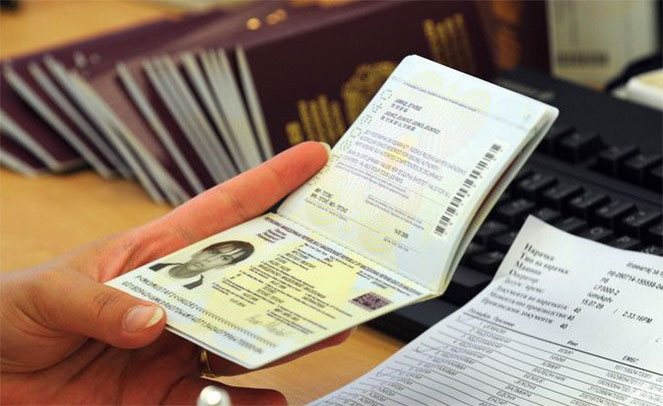
Additional documents may be required for certain categories of citizens. For example, military personnel must present permission from their command, and persons permanently residing abroad must present a current foreign passport.
Documents for a children's biometric passport
Since minor citizens of the Russian Federation are endowed with almost all the basic rights that are relevant for adults, the migration service takes fingerprints on the international passport of children starting from the age of 12. However, in order for the child to receive such a document, his parents should also take with them:
- baby's birth certificate;
- confirmation of Russian citizenship (if it is not indicated on the birth certificate);
- internal passport of at least one parent;
- if the child is over 14 years old - his internal passport.
Legal representatives of a minor should take into account an important circumstance: it is possible to issue a “new” document for a child or teenager, but it is impossible to enter the child into a biometric passport. However, you should think carefully about whether it makes sense to get a passport for a 10-year-old child whose appearance will change noticeably more than once. According to the legislation of the Russian Federation, a biometric document can be issued even to a one-year-old child (fingerprints will not be taken in this case), but how justified is this?
Find out more about how to make a passport for a child.
Biometric passport photo: nuances
Regardless of who receives the document - an adult or a child, special attention should be paid to the requirements for the photo that will decorate your new passport along with fingerprints. The fact is that a standard photo measuring 35 x 45 mm, taken in a photo studio, can easily be pasted into an old-style passport, but a photo for a biometric passport must be taken during a personal visit to a unit of the Main Directorate for Migration Affairs of the Ministry of Internal Affairs.
Why are such strict requirements imposed on travelers? It's all about the third parameter, which is contained in the “new” passport - the distance between the pupils. Employees of the Main Department of Migration Affairs of the Ministry of Internal Affairs are responsible for ensuring that the photographs they take reflect the structure of the client’s head as accurately as possible.
What should people do?
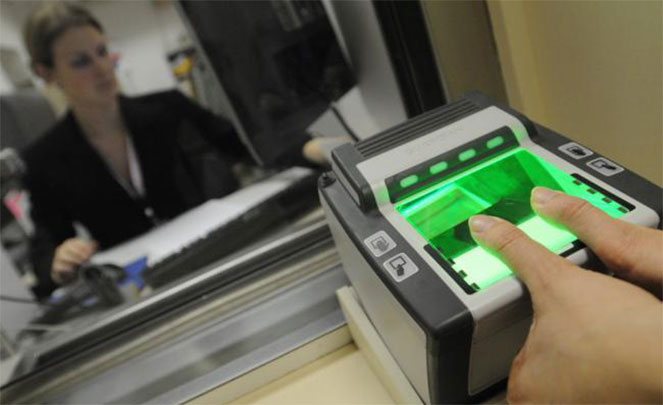
who have a suitable photograph, but are unable to visit the appropriate authority? In this case, you should make sure that your photo meets all the parameters and send it electronically along with the application.
In case of remote submission of documents, photographs that meet the following requirements are accepted:
- format - JPEG 2000;
- resolution - 450 dpi and more;
- space - 8-bit for black and white photographs and 24-bit for color;
- file weight is 300 KB or less.
We are talking about the mandatory inclusion of papillary patterns of two index fingers in the electronic chip. The document stipulates that if for some reason it is impossible to “copy” prints from the index fingers, they will be satisfied with other
.
This procedure will begin on the territory of Russia from January 1, 2021, and in diplomatic missions and consular offices of the Russian Federation abroad no later than January 1, 2021
. The bill on mandatory fingerprinting when obtaining biometric foreign passports was approved by the State Duma at the end of 2021.
However, biometric passports themselves began to be issued in Russia back in 2021. So far, on their electronic media there is only a digital photograph of a citizen
. A biometric passport differs from a regular one in that it has a built-in chip containing a photograph of the owner and his last name, first name, patronymic, date of birth, passport number, date of issue and expiration date.
It is assumed that special biometric information can be stored in the chip: a pattern of the iris or fingerprints. This is provided technologically
. As you can see, the turn has already reached the papillary patterns, and the membrane of the eye is the next stage.
By the way, Russian citizens don’t have to bother with all this biometrics, especially since the state duty for biometric passports is much more expensive. It is quite possible to obtain foreign passports without electronic chips, the so-called “old style”
.
They are issued for a period of five years, and biometric ones - for 10 years. For pensioners who may need a foreign passport only to travel to relatives in neighboring countries, this is a completely acceptable and budget option
. But the problem is that more and more countries are introducing the procedure for entering their territory using precisely such “advanced” documents.
Fingerprints will not be taken in the old-fashioned way, by dipping your fingers in ink and applying them to special paper, but by electronic scanning. The “smart” equipment will copy and remember everything itself; you won’t have to wash your hands after the procedure.
It is known that the problem of personal data protection causes great concern in society. Will our papillary patterns recorded on CDs end up on Gorbushka trays? Who will be able to use this information and how? Experts from the Russian Federal Migration Service claim that fingerprints will be stored exclusively on the microcircuits of foreign passports - they will be deleted from any other databases immediately after the document is issued.
Moreover, in a biometric passport, electronic information is not available even to its owner and is intended only for remote reading. Actually, this is its meaning
. The data on the Russian passport chip is protected using BAC (Basic access control) access control technology.
However, you can voluntarily undergo fingerprinting without receiving a “new sample” international passport. And not only in the police, but also in the territorial body of the Federal Migration Service of Russia.
By the way, why do you need to voluntarily “roll back your fingers”? From time to time, discussions flare up on proposals for mandatory universal fingerprint registration. Opponents of this idea fear the notorious “total control” and “the establishment of a police state.”
However, the head of the Investigative Committee of Russia, Alexander Bastrykin, has repeatedly explained that maximum, if not universal, “fingerprinting” of the population is needed not so much to help forensic experts, but for timely rescue or, if trouble has occurred, even identification of the deceased person. In the West, in particular in Europe, and especially in the USA, this is the norm.
.
Let's say a person is going hunting in some wild corner
.
Or a climber - rock climbing
.
Who knows what could happen to him? God forbid, he gets injured or loses consciousness... And there it is not customary to carry an identity card with you at all times - the police are not very interested in where you are registered
. In order to inform your loved ones in time and get the right blood type, you need to know exactly everything about the person in trouble and not waste precious time searching for the necessary information.
In Russian Accident Registration Bureaus, employees cannot find out for weeks the identity of people found alive but unconscious. Elderly people who have lost their memory, who are unable to find their way home on their own, and lost children are left without timely help.
. What can we say about unidentified corpses? About relatives of missing people?
This procedure is considered a public service, which is provided completely free of charge. By the way, a person who voluntarily undergoes such registration has the right to subsequently refuse it and demand the destruction of the results of fingerprinting.
And his request must be satisfied - within 30 days from the date of receipt of such a request.
Materials with fingerprints will be stored as long as possible until a person reaches 100 years of age. They can be destroyed, in addition to the personal request of the “owner,” after the death of a person at the request of relatives.
What is important is that a person can apply for voluntary fingerprint registration not only at the place of residence, but also at the place of actual stay. For example, a climber can register in the nearest village before conquering a mountain peak
. And after a safe return, demand the destruction of information.
Any tourist, yachtsman, miner, hunter, anyone who went on an extreme vacation or a dangerous business trip can do the same.
Russian law requires mandatory fingerprinting of all police detainees, suspects and convicts. Millions of such materials are stored electronically in law enforcement data banks.
.
These dossiers help to quickly compare traces from a new crime scene with existing ones
. Most repeat offenders were caught precisely thanks to this comparative analysis.
In addition, all those who serve in law enforcement agencies, private security companies and risk their lives are subject to mandatory fingerprint registration. The same list includes civilian pilots, sailors, rivermen, and firefighters. Here the goal is different: to identify your person if, God forbid, he was found dead
. This rule was introduced after the so-called “first Chechen war,” when the bodies of many of our soldiers turned out to be unidentified. According to some reports, the total number of all fingerprints taken exceeds 40 million.
The first thing a person going abroad for the first time thinks about is obtaining a passport. Now citizens of the Russian Federation are faced with a choice between an old and a new document.
The new biometric passport brings many conveniences, but also frightens many with additional requirements, for example, fingerprinting. But before we begin to assess the safety of fingerprinting, we should find out whether the new generation of international passports are really better than their predecessors.
Fingerprints for visa
When applying for a visa to enter the Schengen countries, you also need to undergo a fingerprinting procedure. The citizen should contact the embassy or consulate general of the receiving state, as well as the visa center. Fingerprinting for a visa is carried out in the same way as when receiving a biometric passport. Children under 12 years of age and people with incurable skin defects that do not allow scanning of papillary patterns are exempt from this procedure.
The fingerprinting procedure may differ depending on the country to which the citizen is traveling. At the US Embassy, fingerprints are taken from the index fingers. For Schengen, all fingers on the left hand and the thumb on the right hand are scanned.
List of documents required for Schengen registration
In addition to submitting fingerprints and a digital photo, a biometric Schengen visa is issued in the same way as the previous one.
List of documents required to obtain a Schengen visa:
- Questionnaire. Issued by the Consulate or filled out directly on the official website of the country to which the trip is planned.
- A valid passport with at least two blank pages and valid for at least six months.
- A photocopy of your old passport, if available.
- Receipt with paid consular fee.
- Active honey insurance for an amount exceeding 30 thousand
. Euro. - Working citizens must present a certificate from their current place of work.
- Non-working - a sponsorship letter with assurances of payment of expenses associated with the trip.
- Pensioners - a photocopy of the pension certificate.
- Students/schoolchildren - a standard certificate from the place of study.
- Minor children - a notarized power of attorney from both parents to travel outside the country and a photocopy of the birth certificate.
- Individual entrepreneurs and private entrepreneurs – a photocopy of a certificate confirming business registration.
- Any documents confirming the applicant’s solvency. These may be: an annual bank account statement, a certificate from the tax service, a certificate of income from a previous place of work.
- Documents confirming the existence of personal property.
- Copy of the passport.
- Any document confirming the availability of a hotel reservation in the country to which the tourist is traveling.
- Return tickets.
Does a child need fingerprinting?
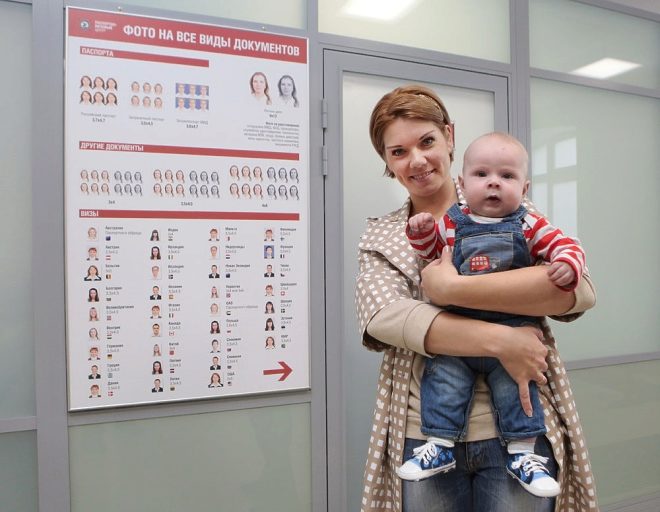
Adults who plan to travel to other countries with their children, when applying for a new type of foreign passport, think about whether fingerprints are needed for the child’s foreign passport. The legislation does not provide a clear answer to this. Parents have the right to decide this issue themselves, but if the child is under 12 years old. From this age, children, as well as adults, are required to undergo fingerprinting.
Required Documentation
A foreign passport with a chip containing the citizen’s biometrics is, of course, a convenient and practical thing both for the citizens themselves and for customs officers. Therefore, more and more people are interested in what documents are required for it. It’s worth saying right away that if you plan to take children with you on a trip abroad, you will have to fork out for biometric passports or OPP for each of them, since they will not be included in the parental document.
All necessary documents for a child and an adult, which are required by the inspectors of the Department of Internal Affairs of the Ministry of Internal Affairs for a chipped passport, are indicated in the following table.
| Documentation for an adult | Documentation for the child |
You must submit:
| For children you need to provide the following package of documents:
|
Important! Before deciding to submit documentation for a biometric passport for a child, you should think about the feasibility of such a step. The legislation allows anyone to make such a document, even a newly born baby, but is it worth spending money on it if over the 10 years for which a biometric document is issued, the baby’s face can change very significantly several times.
Photo requirements
For a passport with a biometric chip, there are special requirements for the photograph. If for an ordinary foreigner you can bring ordinary photos in a format of 3.5x4.5 cm, then for an innovative document the photo is taken during its registration directly at the Main Department of Migration of the Ministry of Internal Affairs. This requirement is associated with the emergence of a new parameter - the distance between the pupils. The photo is taken in such a way that it reflects the structural features of the human head as accurately and clearly as possible.
Briefly about the new biometric passport
Before studying the question of whether you need to submit fingerprints for a foreign passport and what problems may arise at customs if you present an ordinary document instead of a “modern” document, you should understand what a biometric passport is in general. Today, this term refers to a document that, in addition to data printed on paper, contains a chip, and on it, in turn, the following information is stored:
- JPG photo of the traveler;
- date and city of birth;
- date of issue of the biometric document.
To find out this information, a person working at customs simply needs to scan the chip, thereby reducing the time that previously had to be spent turning pages.
In general, a biometric passport is convenient for both immigration officers and travelers themselves. Such documents are almost impossible to falsify, and the likelihood that the chip will not work at customs is extremely low - there have been no official reports of failures yet.
In addition to the photograph, place of birth and main dates, the chip can store other data. So, now when applying for a foreign passport, fingerprints are taken, the retina of the eye is scanned and the distance between the pupils is measured. Until January 1, 2015, biometric documents were registered in Russia, often not containing this information. However, at the moment it is impossible to obtain a biometric passport without fingerprints (unless we are talking about children under 12 years old) - and this does not make any sense.
Do you want to travel with a new document? Find out the latest information on how to get a new type of international passport in 2021.
Where to apply with documents?
According to the Order of the Federal Migration Service dated March 26, 2014, a passport with a chip can be obtained upon application from a citizen. You need to visit the Main Migration Department of the Ministry of Internal Affairs and submit all the necessary documents there on a first-come, first-served basis. But it would be better to make an appointment through the State Services portal or directly through the website of the Main Department of Migration Affairs of the Ministry of Internal Affairs. It's not difficult to do. On the website, go to the appropriate section to make an appointment, select the department to which documents will be submitted, select the service and type of operation, enter the necessary personal data, select a free day and time of visit.
To apply through Gosuslugi, you first need to go through an identification procedure, which can take several hours (during this time, the authenticity of the person’s basic documents is checked). After this, log into your personal account, select the appropriate service, fill out the proposed form, upload a photo, click the “Submit” button and wait for the message about the time of visiting the Main Migration Department of the Ministry of Internal Affairs to complete the registration.
Benefits of biometrics

Biometric passports were first introduced in the US in 2021. The pretext for this was the world-famous terrorist attacks that occurred in New York on September 11, 2021. Chip-protected passports were first used only by American citizens, and then the United States began to demand the implementation of this system by other states.
In Russia, biometric passports will be issued starting in 2021. However, initially they did not contain biometrics as such. Only a digital photo of the owner was recorded on the microchip, allowing identification by the distance between the pupils. And only in 2021 (in Moscow and St. Petersburg since 2013) our country finally adopted world practice, and fingerprint data appeared in the new generation passports, which made the personal information of their owners more secure.
Externally, the document can be identified by a holographic sticker on the cover in the form of a microcircuit logo, and the number of pages increased from 36 to 45, including a thicker first page, on which a photo and personal data is located.
It is on this page that a chip with biometric data is embedded.
Advantages and disadvantages

In addition to the additional level of protection, the new document has the following advantages:
- Validity period extended by 2 times (10 years instead of 5).
- The procedure for passing customs control is accelerated, since the inspector no longer has to manually flip through the pages, and the information is instantly read from the chip. In a number of countries there are even special corridors for holders of biometric documents, the queue in which moves many times faster.
- The risk of passport forgery is minimized. All forms are printed exclusively by Gosznak, and the microchip is protected against hacking in the form of an encrypted coding algorithm.
Has a new passport and its own shortcomings. These include the increased cost of the state duty ( 3,500 rubles instead of 2,021 rubles), the inability to register a child, for whom a separate document will have to be drawn up, a longer production time and difficulties in making corrections, since all actions take place through the State Sign.
Considering all the advantages and disadvantages of the new type of international passport, we can conclude that it is convenient for an adult who often travels abroad. For children whose appearance changes every year, and people who travel no more than once every 5 years, it will be more economical to issue an old passport.
If you decide to get a new passport, then you cannot avoid fingerprinting. Let's look at how this procedure is carried out and why it was introduced.
Force Majeure
When the deadline approaches, the person, happily waiting for a new permit, goes to the territorial department of the Ministry of Internal Affairs for migration issues to get it. But a joyful moment can be overshadowed by unforeseen circumstances. At the GUMV, the citizen will be asked to undergo a fingerprint procedure again to compare with the papillary patterns that are included in the passport microcircuit. If the fingerprints are identical, a passport is issued. But sometimes it happens that the prints do not match.
This happens extremely rarely and problems arise for several reasons:
- Fingerprinting was carried out by an inexperienced employee.
- At the time of the procedure, the equipment was faulty.
- There are defects on the fingertips that do not allow the papillary pattern to be scanned.
There will be only one way out - re-scanning the papillary patterns.
Fingerprinting for a foreign passport with electronic biometric media is mandatory today. Without it, it is practically impossible to obtain a document (with minor exceptions). For some Russian people, the fingerprinting procedure causes negative associations. They view it as total surveillance of their person; they are afraid that the fingerprints will end up in some criminal database and can be used by dishonest people.



